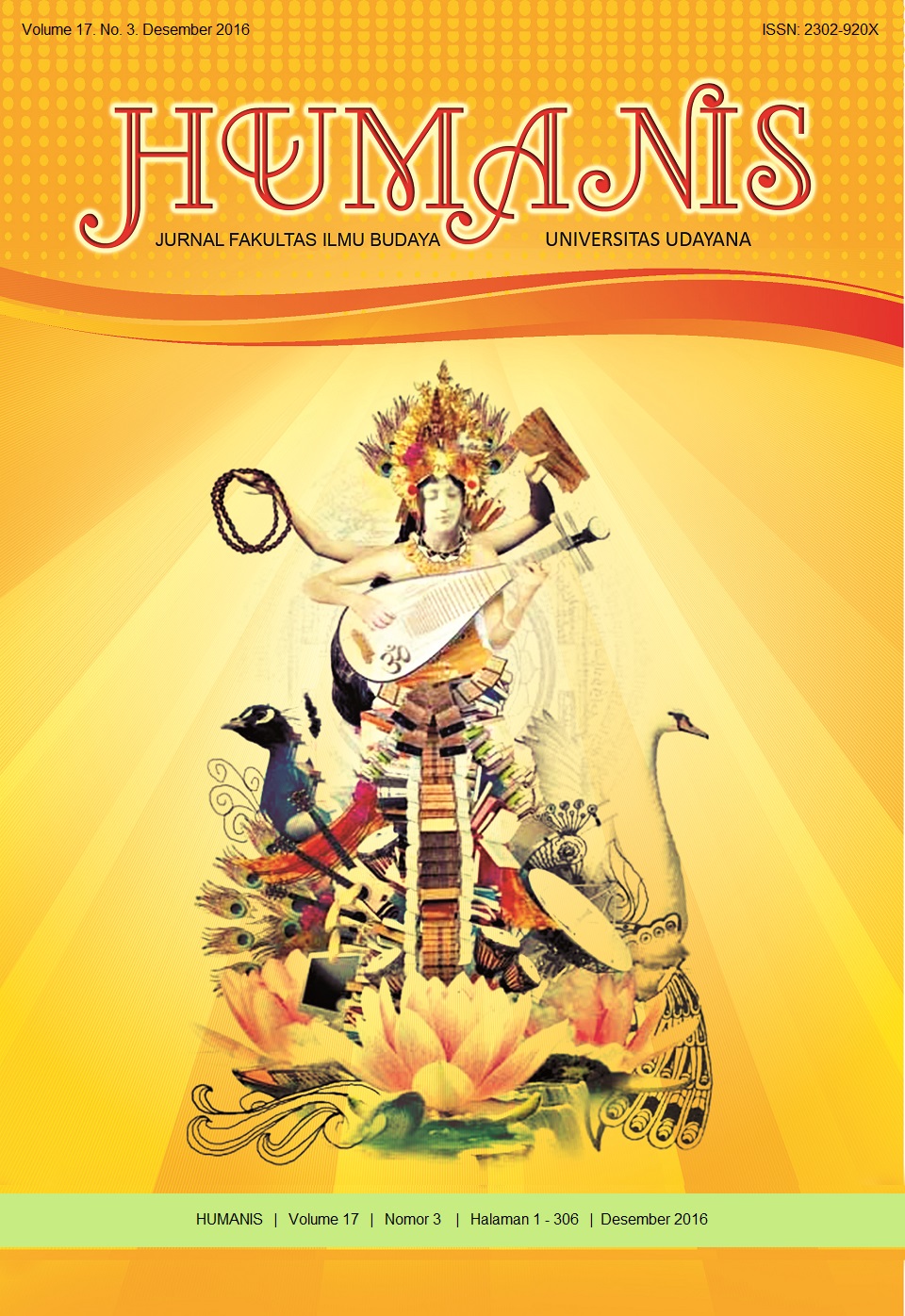Novel Ratna Tribanowati Léak Soléh, Solah Léak Karya I Madé Sugianto: Analisis Penokohan dan Amanat
Abstract
This study discusses the novel text Ratna Tribanowati Léak Soléh, Solah Léak with analytical characterizations and mandate. This study uses a structural theory. This analysis have function to reveal the narrative structure contained on the first novel in terms of characterization and mandate. This study uses a structural theory include: Teeuw, Ratna, and Nurgiyantoro. The methods and techniques used in this research there are four stages: 1) the stage of the provision of data using the reading method is assisted by using the technique of translation and recording techniques, 2) the source of the data used to determine the source of the data analyzed and sources of data used is the data source primer, 3) use traditional methods of data analysis phase assisted with the qualitative descriptive analytic techniques, and 4) the stage of presentation of the results of data analysis using informal method, aided by deductive-inductive techniques. Results can be obtained in this study namely, the unfolding of the narrative structure consists of incident, plot, characters, settings, themes and messages. This study reveals aspects of the characterizations described based dispositive (physiological, sociological, psychological) and characterizations (analytical, dramatic, combined). The mandate contained in the text of the novel Ratna Tribanowati Léak Soléh, Solah Léak including: the message of good leadership, helping, revenge and love, karmaphala, ritual, ethics or good morals.


















